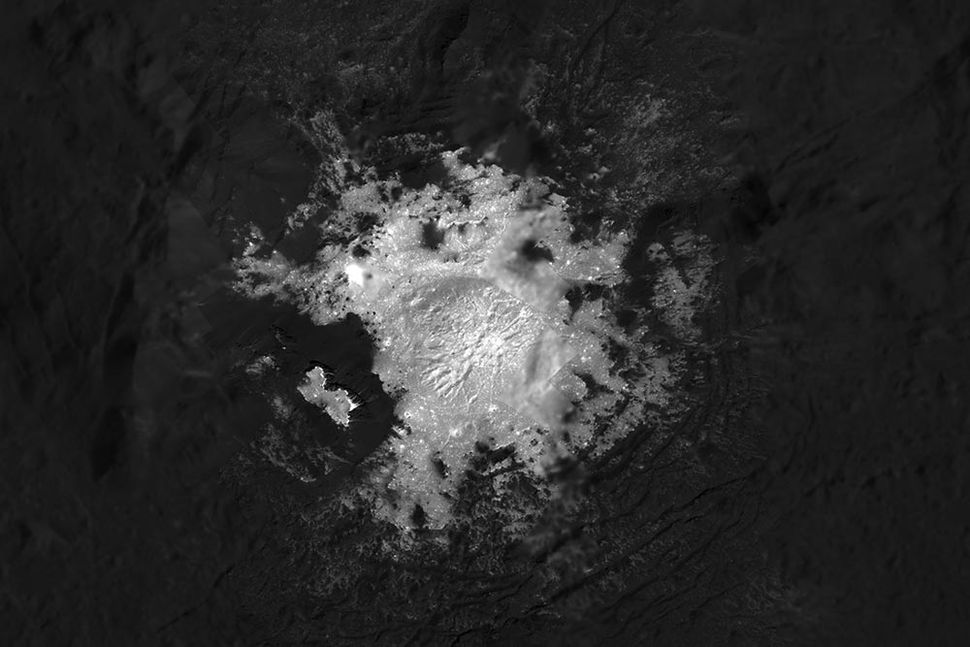Dwarf Planet Ceres Hosted Near-Surface Water for Millions of Years
By Mike Wall 16 hours ago

This mosaic of the bright spot known as Cerealia Facula inside the dwarf planet Ceres' Occator Crater is based on images obtained by NASA's Dawn spacecraft during its second extended mission, from an altitude as low as about 21 miles (34 kilometers).(Image: © NASA/JP:-Caltech/UCLA/MPS/DLR/IDA)
Some parts of the dwarf planet Ceres harbored pockets of near-surface water for millions of years in the recent past, a new study suggests.
Researchers analyzed observations of Ceres' Occator Crater made by NASA's Dawn spacecraft, which studied the dwarf planet from orbit from March 2015 to October 2018, when the probe ran out of fuel.
The 57-mile-wide (92 kilometers) Occator sports dramatic bright spots, which Dawn team members determined are salts left behind when briny water boiled away into space. This water likely began as subsurface ice, which was melted by the intense heat of the impact that created Occator about 20 million years ago. Once liquefied, some of it bubbled up to the surface via fissures and was lost. [In Pictures: The Changing Bright Spots of Dwarf Planet Ceres]
Such sublimation occurred as recently as 4 million years ago; that's the apparent age of the youngest deposits on Occator's floor. And that 16-million-year gap is puzzling, researchers said.
More:
https://www.space.com/dwarf-planet-ceres-long-lasting-water.html?utm_source=notification
